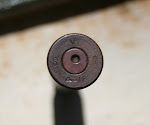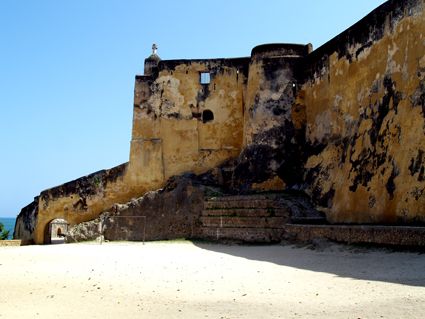The history of Colonel Ewart Grogan
is a story of what a man can do for love –or what men could do for love then . Ewart Scott Grogan was born in
London in 1874. He fell in love with Gertrude watt, but her stepfather disapproved
the match. To prove his worthiness in character and seriousness he commenced
his expedition from Cape Town to Cairo at the age of 24, reaching Cairo in
1900, after two and a half years of travelling. To cap this success he married
Gertrude. In 1904 Grogan hired the London architect, H. O. Cresswell and a firm
of local Indian contractors to build his home in Kenya. “Chiromo” (meaning the
joining of two rivers) named after the Nyasaland settlement at the junction of
the Ruo and Shire rivers) was built on the site that Grogan bought from Bennet.
Gertrude's Garden Children's Hospital located in Nairobi, Kenya was founded in
1947, with the donation of some land by Colonel Ewart Grogan, in memory of his
wife. After his epic trip, Grogan returned to London in 1900 a celebrity. But
Africa was in his blood and he soon returned, first serving in Lord Milner's
'Kindergarten', a elite group of young imperialists charged with reconstructing
South Africa after the Boer War, then settling in British East Africa.
POST OFFICE
Egypt is the most popular tourist destination in Africa. In 2007, Egypt attracted around 10 million visitors. The Pyramids have been a prime tourist attraction for the past 2000 years, but did you know Sudan has more Pyramids than Egypt ! The 223 pyramids are smaller and steeper than their Egyptian counter parts, but the Nubians were obviously very busy people around 4 BC - 3 AD LEARN MORE and get daily up dates.
Tuesday 25 September 2012
Wednesday 19 September 2012
THE ITALIAN MEMORIAL CHURCH, NYERI.
My curiosity to learn about this man was inspired by a visit to the Italian War Memorial Church in Nyeri, Kenya, it is not your ordinary Catholic sanctuary. It houses the remains of 676 mostly Italian soldiers captured by the British durin...
g
the Second World War.Vaults containing the remains of African soldiers,
mostly from Somali-land, who could not be interred in the church
because of their faith. They had fought alongside the Italian
soldiers.At the entrance here is a marble-lined tomb, It is that of the
Prince Amedeo Savoia-Aosta, the leader of the Italian forces in East
Africa. He himself commanded the 7,000 Italians at the mountain fortress
of Amba Alagi, in Northern Ethiopia. With his water supply compromised,
surrounded, and attacked by 9,000 British and Commonwealth troops and
more than 20,000 Ethiopian irregulars, the Duke of Aosta surrendered
Amba Alagi in Northern Ethiopia on 18 May 1941. Due to their gallant
resistance, the British awarded him and his men a surrender with
military honors. Shortly after his surrender, the Duke of Aosta was
interned in a prisoner-of-war camp in Nairobi, Kenya. He was placed in
command of his fellow prisoners, but never saw the end of World War II.
On 3 March 1942, shortly after his internment, he died at the prison
camp, reportedly as a result of complications from both tuberculosis and
malaria.Count Galeazzo Ciano, Italian Foreign Minister under his
father-in-law Italian dictator Benito Mussolini, paid Amedeo a high
compliment in his famous diaries. Upon being given the news of the
Duke's death Ciano wrote, "So dies the image of a Prince and an Italian.
Simple in his ways, broad in outlook, and humane in spirit."
Monday 17 September 2012
THE BLACK COMMUNITY IN THE INDIAN SUB-CONTINENT
An East African community arrived and settled in the Indian
subcontinent during the 1200AD and 1900AD period. They are believed to have
been descendants of slaves, sailors, servants and merchants from East Africa. They
were to be known as the sidis. A large number occurred in the region in the 17th
century when Portuguese slave traders sold a number of the slaves to the local
princes.
The origins of the name sidis is believed either to be from
a term of respect from North Africa or derived from the name of captains of
Arab vessels that first brought the sidi settlers to India. They are currently
estimated to be a population of 20 000 – 55,000 within the regions of
Gujarat, Maharashtra, Karnataka states of India and Sindh and Balochistan
provinces of Pakistan. Some Indian Siddis are descended from Tanzanians and
Mozambicans brought by the Portuguese. While most enslaved African people
became Muslim and a small minority became Christian, very few became Hindu
since they could not find themselves a position in the traditional Hindu caste hierarchy
In western India (the modern states of Gujarat and
Maharashtra), they were known for their physical strength and loyalty, they
were sought out as mercenaries by local rulers and as domestic servants and
farm laborers. Some escaped slavery to establish communities in forested
areas,.
Although Gujarati Siddis have adopted the language and many
customs of their surrounding populations, some African traditions have been
preserved. These include the Goma music and dance form, which is
sometimes called Dhamaal (Gujarati).The term is believed to be derived
from the Ngoma drumming and dance forms of Bantu East Africa. The Goma also has
a spiritual significance and, at the climax of the dance, some dancers are
believed to be vehicles for the presence of Siddi saints of the past.
Many members of the Siddis community of Karnataka had
migrated to Pakistan after independence and have settled in Karachi, Sindh. The
majority of the Siddhis in Karnataka are descendants of Siddhi slaves who were
brought from East Africa (mostly Mozambique) and Ethiopia to Goa by the Portuguese,
British and the Arabs between the 16th and 19th centuries. During the Goan
Inquisition, some of these slaves were freed and some escaped into the forests
of the neighbouring Karnataka state.
A number of Africans (Ethiopians aka Abyssinians aka
Habshis) who were enslaved and taken to India in medieval and
post-medieval times eventually rose to positions of power and influence in the
16th century e.g. Shams ud-Dawlah Muhammad al-Habshi, Bilal Habshi, Said
Safar Salami and Shaik Said al-Habshi Sultani (perhaps best remembered as the
builder of a famous mosque, known by his name, in Ahmedabad)
Thursday 6 September 2012
FORT JESUS
Fort J
Fort Jesus is a Portuguese fort built in 1593 by order of King Philip I of
Portugal
(King Philip II of Spain),
then ruler of the joint Portuguese and Spanish Kingdoms,
located on Mombasa Island
to guard the Old Port of Mombasa, Kenya. It was built
in the shape of a man
(viewed from the air), and was given the name of Jesus. In
2011 the fort was declared
a World Heritage Site by UNESCO, highlighted
as one of the most
outstanding and well preserved examples of 16th century
Portuguese military fortifications
Between 1631 and 1875 the fort was won and lost nine times by the nations
contesting control of Mombasa. It was declared a historical monument in 1958.
Today it houses a museum.
The fort was designed by a Milanese architect,
Giovanni Battista Cairati, who was the Chief Architect for Portuguese
possessions in the East. It was the first European-style fort constructed
outside of Europe designed to resist cannon fire. Today, it is one of the
finest examples of 16th century Portuguese military architecture, which has
been influenced and changed by both the Omani Arabs and the British. The fort
quickly became a vital possession for anyone with the intention of controlling Mombasa
Island or the surrounding areas of trade. When the British colonised Kenya,
they used it as a prison, until 1958, when they converted it into a historical
monument. James Kirkman was then assigned to excavate the monument, which he
did (with a large use of external historical documents) from 1958 to 1971.
The architecture of the fort represents the rough outline of a person lying
on their back, with the head towards the sea. The height of the walls is 18 meters.
The original Portuguese fort had a height of 15 meters, but the much taller
Oman Arabs added 3 meters upon capturing the fort.
The fort combines Portuguese, Arab and British elements, representing the
major powers that held it at different times in history. Portuguese and British
presence if felt by the presence of their respective cannons. The Portuguese
cannons had a range of 200 meters and are longer than the British cannons which
had a range of 300 meters. Oman Arabs marked their occupancy with numerous
Koran inscriptions into the wooden door posts and ceiling beams. The Muslim
tradition of 5 pillars is also portrayed throughout the fort, with a former
meeting hall supported by 5 stone pillars to the ceiling.
Some of the historical structures still standing in the fort include Oman
House, which was the house for Sultan who governed the East African coast.
Others are an open water cistern by the Portuguese for harvesting rain water,
and a 76-foot deep well sank by the Arabs, but whose water was too salty to be
used for anything but washing.
Subscribe to:
Posts (Atom)




